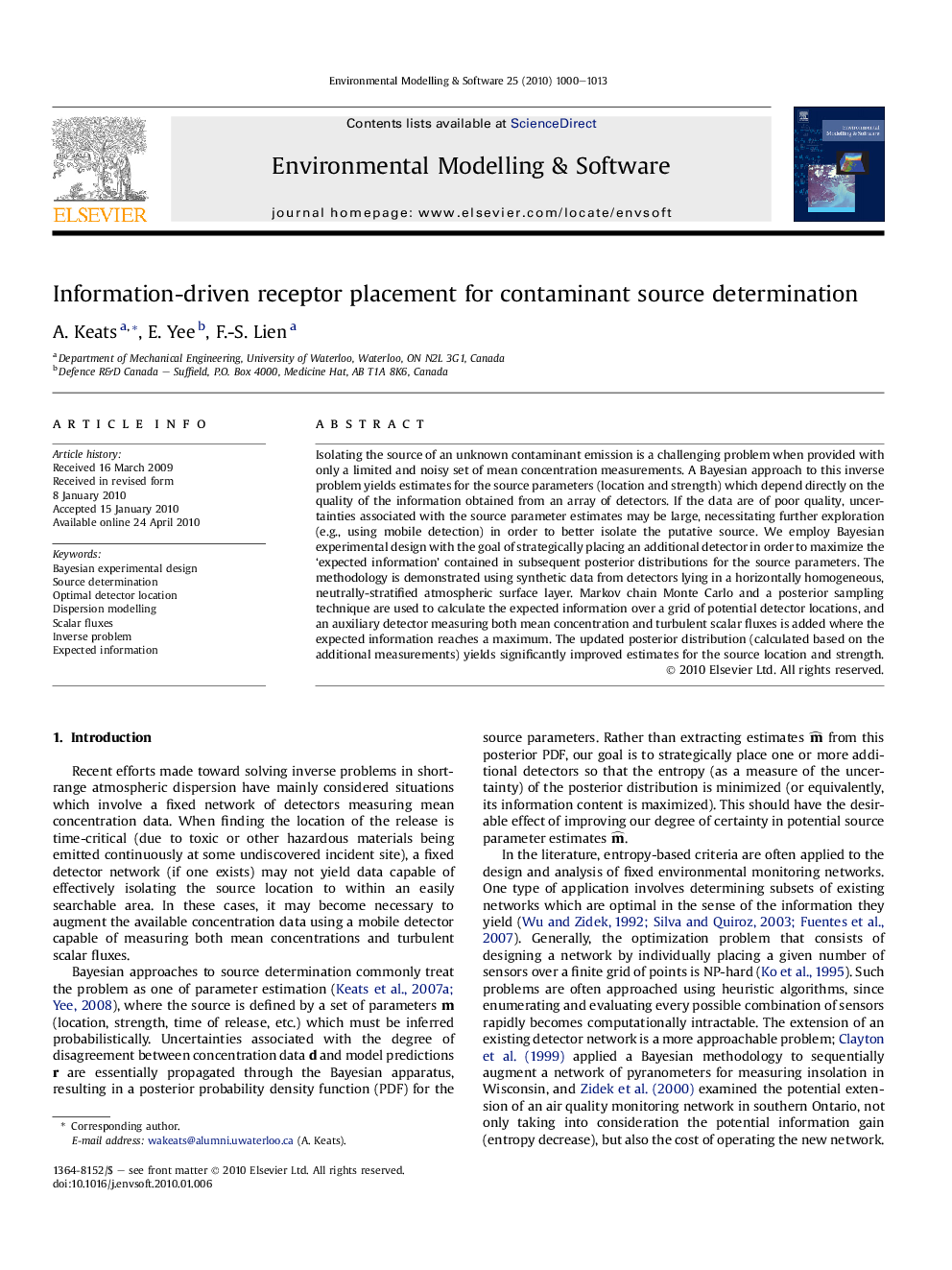| Article ID | Journal | Published Year | Pages | File Type |
|---|---|---|---|---|
| 568703 | Environmental Modelling & Software | 2010 | 14 Pages |
Isolating the source of an unknown contaminant emission is a challenging problem when provided with only a limited and noisy set of mean concentration measurements. A Bayesian approach to this inverse problem yields estimates for the source parameters (location and strength) which depend directly on the quality of the information obtained from an array of detectors. If the data are of poor quality, uncertainties associated with the source parameter estimates may be large, necessitating further exploration (e.g., using mobile detection) in order to better isolate the putative source. We employ Bayesian experimental design with the goal of strategically placing an additional detector in order to maximize the ‘expected information’ contained in subsequent posterior distributions for the source parameters. The methodology is demonstrated using synthetic data from detectors lying in a horizontally homogeneous, neutrally-stratified atmospheric surface layer. Markov chain Monte Carlo and a posterior sampling technique are used to calculate the expected information over a grid of potential detector locations, and an auxiliary detector measuring both mean concentration and turbulent scalar fluxes is added where the expected information reaches a maximum. The updated posterior distribution (calculated based on the additional measurements) yields significantly improved estimates for the source location and strength.
